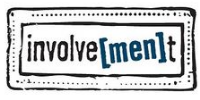From (Un)Willingness to InvolveMENt: Development of a Successful Study Brand for Recruitment of Diverse MSM to a Longitudinal HIV Research
BACKGROUND:
HIV continues to be a major concern among MSM, yet Black MSM have not been enrolled in HIV research studies in proportionate numbers to White MSM. We developed an HIV prevention research brand strategy for MSM.
METHODS:
Questionnaires and focus groups were conducted with 54 participants. Descriptive statistics and chi-square analyses were performed and qualitative data were transcribed and content analyzed to identify common themes.
RESULTS:
Formative research results indicated that younger Black MSM (18-29 years) were less likely to think about joining prevention studies compared to older (≥30 years) Black MSM (x2 = 5.92, P = 0.015). Qualitative and quantitative results indicate four prominent themes related to brand development: (1) communication sources (message deliverer), (2) message (impact of public health messaging on perceptions of HIV research), (3) intended audience (underlying issues that influence personal relevance of HIV research), and (4) communication channels (reaching intended audiences).
CONCLUSION:
The findings highlight the importance of behavioral communication translational research to effectively engage hard-to-reach populations. Despite reservations, MSM in our formative study expressed a need for active involvement and greater education to facilitate their engagement in HIV prevention research. Thus, the brand concept of "InvolveMENt" emerged.

